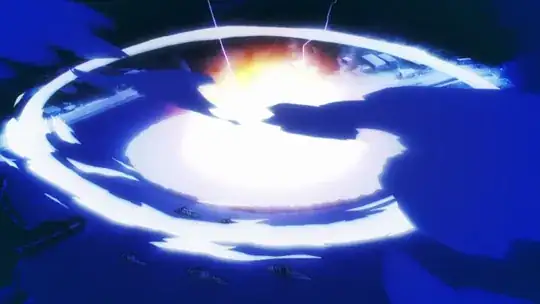The easiest solution to this would be if the light novels gave us a concise answer, but of course, nothing in life is that easy.
But while the light novels don't give us an accurate size of the crater, they do give us the equivalent energy - 20 megatons (20,000 kilotons) of TNT:
Repeating Kazama's order, Tatsuya pulled the trigger on Third Eye.From within Tsushima Base, across the strait, directly into Zhènhai
Naval Port. Tatsuya's magic transformed 1 kg of matter directly into energy.
In accordance with Einstein's Formula, the heat energy equated to
approximately 20,000,000 tons of TNT.
– Volume 7 - Yokohoma Disturbance II, Chapter 13
Now using this, we can approximately calculate a blast radius.
To get my results, I used this simulation here - http://nuclearsecrecy.com/nukemap/. First off, I ran a couple of tests by plugging in the data from real-life detonations to see how accurate it was:
Test 1: Ivy Mike Test - Actual crater diameter: 1900m Result from simulation: 1680m - 88% accurate
Test 2: Castle Bravo Test - Actual crater diameter: 2000m Result from simulation: 1900m - 95% accurate
Test 3: Sedan Test - Actual crater diameter: 390m Result from simulation: 360m - 92% accurate
Given this information, we can assume that the simulation is roughly 90% accurate, giving an error margin of ±10%.
Setting the yield as 20,000 kilotons, with an airburst of 17m (the beam height of a typical modern Chinese ship, or the height at which the flag would be flying) leaves us with a result of a crater diameter of 2100m, which, accounting for error, could be anywhere between 1890m and 2310m.
As for the blast itself, the simulation lists the fireball as having a diameter of 6400m, which following the previous error margins could be between 5760m and 7040m. These and other statistics are all from the simulation and are viewable upon following this link.
In the picture below, the blast is still only just beginning, and if we assume the ships in the shot are the same length as a typical modern Chinese ship (~155m), these numbers seem definitely feasible.

TL;DR: The crater would be approximately 2.1km across.
Granted, this simulation is for a nuclear blast and not a mass of pure energy, but since the energy released is the same, the results should be more or less equivalent.
